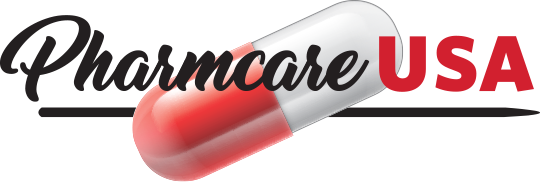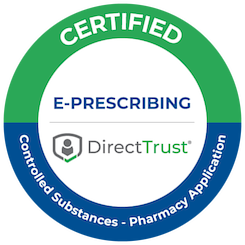Introduction to E-Prescribing
The digital revolution has been transforming industries worldwide and healthcare is no exception. One of the pivotal innovations in the healthcare sector is e-prescribing. E-prescribing, or electronic prescribing, is a technology-based method that allows healthcare professionals to send prescriptions directly to pharmacies from the point of care. It replaces the traditional paper-based method, which is prone to errors.
E-prescribing is not just about replacing paper with digital prescriptions; it’s about creating a safer, more efficient, and more effective system for managing medication. By ensuring the right medication reaches the right patient at the right time, e-prescribing can help to improve patient outcomes, reduce healthcare costs, and enhance the overall efficiency of the healthcare system.
The journey of e-prescribing started with the Medicare Prescription Drug, Improvement, and Modernization Act of 2003. The Act encouraged the use of e-prescribing systems, marking the beginning of a new era in healthcare. Today, e-prescribing is not just a concept but an integral part of healthcare delivery.
Understanding Managed Pharmacy Services for Long-Term Care
Managed Pharmacy Services for Long-Term Care (LTC) are specialized services designed to meet the unique needs of long-term care facilities. These include nursing homes, assisted living facilities, and other care homes. Long-term care pharmacies, or LTC pharmacies, provide a range of services such as medication management, consulting, and review services to these facilities.
Managed pharmacy services for long-term care aim to ensure that residents receive appropriate, safe, and effective medication. They play a crucial role in managing complex medication regimens, preventing drug interactions, and reducing medication errors. The goal is to improve the health outcomes of residents and enhance the quality of care.
While managed pharmacy services for long-term care have been in existence for quite some time, the advent of e-prescribing has brought about a paradigm shift. The adoption of e-prescribing in LTC pharmacies has redefined the way they operate and deliver services.
Role of E-Prescribing in Modern Healthcare
In the modern healthcare landscape, e-prescribing has emerged as a critical tool for enhancing patient safety, improving medication adherence, and streamlining processes. It eliminates the risks associated with handwriting errors, lost prescriptions, and misinterpretation of medication orders.
E-prescribing allows for the seamless transfer of prescription information between the prescriber and the pharmacy. It ensures that the pharmacy receives accurate and complete information, which can help to prevent medication errors. Furthermore, e-prescribing systems come with built-in clinical decision support systems that provide alerts about potential drug interactions, allergies, and contraindications.
Moreover, e-prescribing systems facilitate better coordination of care. They allow healthcare providers to track whether patients have filled their prescriptions, which can help to enhance medication adherence and patient outcomes. E-prescribing also reduces the time patients spend waiting at the pharmacy, thereby improving patient satisfaction.
The Intersection of E-Prescribing and Long-Term Care Pharmacy
The adoption of e-prescribing in long-term care pharmacies has opened up new avenues for improving patient care. It has enabled LTC pharmacies to manage complex medication regimens more effectively, reduce medication errors, and enhance patient safety.
E-prescribing provides LTC pharmacies with real-time access to patients’ medication history. This helps pharmacists to make informed decisions about the appropriateness of medication, prevent drug interactions, and identify potential medication-related problems. Furthermore, e-prescribing enhances the efficiency of LTC pharmacies by automating the prescription process, reducing the need for manual data entry, and minimizing the risk of errors.
The combination of e-prescribing and LTC pharmacy is not just about technology; it’s about creating a patient-centered approach to medication management. It’s about ensuring that every resident in a long-term care facility receives the right medication at the right time, every time.
The Impact of E-Prescribing on Medication Management in Long-Term Care
E-prescribing has had a transformative impact on medication management in long-term care. It has brought about significant improvements in the accuracy, safety, and efficiency of medication management.
By eliminating the need for handwritten prescriptions, e-prescribing has reduced the risk of medication errors due to illegible handwriting or misinterpretation of medication orders. It also provides real-time access to patients’ medication history, which can help to prevent drug interactions and overmedication.
Furthermore, e-prescribing has streamlined the medication management process in long-term care. It has reduced the time and effort required for processing prescriptions, freeing up staff to focus on patient care. It has also improved the speed and accuracy of medication distribution, ensuring that residents receive their medication on time.
The Role of Software in E-Prescribing for Long-Term Care
Software plays a pivotal role in e-prescribing for long-term care. E-prescribing software, often integrated within an Electronic Health Record (EHR) system, enables healthcare providers to generate, transmit, and track electronic prescriptions.
E-prescribing software comes with a multitude of features that enhance the safety, efficiency, and effectiveness of medication management. These include drug interaction checks, dose calculation, and real-time access to patients’ medication history. The software also provides alerts about potential allergies, contraindications, and duplicate therapies, helping to prevent medication-related problems.
Furthermore, e-prescribing software facilitates seamless communication between healthcare providers and pharmacies. It enables the electronic transmission of prescriptions, reducing the risk of errors due to manual data entry. It also allows for the tracking of prescription fill status, enhancing medication adherence and patient outcomes.
Medication Distribution and Packaging in LTC Pharmacy: The E-Prescribing Revolution
E-prescribing has revolutionized medication distribution and packaging in LTC pharmacy. It has made the process quicker, safer, and more efficient.
Traditionally, medication distribution in LTC pharmacy was a labor-intensive process, prone to errors. With e-prescribing, the process has become automated, reducing the risk of errors and enhancing efficiency. The software automatically generates medication labels, ensuring accurate and consistent labeling.
In terms of packaging, e-prescribing has enabled LTC pharmacies to adopt innovative packaging solutions that enhance medication safety and adherence. For instance, many LTC pharmacies now use unit-dose packaging, which provides medications in individually packaged doses. This not only reduces the risk of medication errors but also enhances medication adherence by making it easier for residents to take their medication.
Advantages of E-Prescribing in Nursing Homes
Nursing homes have been some of the biggest beneficiaries of the e-prescribing revolution. E-prescribing has brought about a host of advantages for nursing homes, from enhanced patient safety to improved operational efficiency.
One of the key advantages is the reduction in medication errors. E-prescribing eliminates the risks associated with handwritten prescriptions, such as illegible handwriting and misinterpretation of medication orders. It also provides alerts about potential drug interactions, allergies, and contraindications, helping to prevent medication-related problems.
E-prescribing also streamlines the medication management process in nursing homes. It automates the prescription process, reducing the need for manual data entry and minimizing the risk of errors. It also improves the speed and accuracy of medication distribution, ensuring that residents receive their medication on time.
Furthermore, e-prescribing enhances the quality of care in nursing homes. It provides healthcare providers with real-time access to residents’ medication history, enabling them to make informed decisions about the appropriateness of medication. It also allows for the tracking of prescription fill status, which can help to enhance medication adherence and patient outcomes.
Future of Managed Pharmacy Services: Embracing E-Prescribing Technology
The future of managed pharmacy services lies in embracing e-prescribing technology. As healthcare continues to evolve, e-prescribing will play a critical role in shaping the future of medication management in long-term care.
One of the key trends is the integration of e-prescribing with other healthcare technologies. This includes Electronic Health Records (EHRs), telehealth platforms, and health information exchanges. This integration will enable a more coordinated and holistic approach to medication management.
Another trend is the use of advanced analytics and artificial intelligence in e-prescribing. These technologies can provide insights into medication use patterns, predict medication-related problems, and support decision-making. They can also enhance the personalization of care, by tailoring medication regimens to the needs of individual patients.
The adoption of e-prescribing in managed pharmacy services is not just about implementing a new technology; it’s about transforming the way medication is managed in long-term care. It’s about creating a safer, more efficient, and more effective system for managing medication, with the ultimate goal of improving patient outcomes.
Conclusion
The transformative impact of e-prescribing on managed pharmacy services for long-term care is undeniable. By improving the safety, efficiency, and effectiveness of medication management, e-prescribing is reshaping the landscape of long-term care.
As we move towards a future where e-prescribing becomes the norm, it’s important for long-term care facilities to embrace this technology. By doing so, they can enhance the quality of care, improve health outcomes, and create a better future for their residents.
Pharmcare USA can provide your long-term care facility with industry-leading pharmacy services that improve the quality of your care. Get started today with a consultation. The future of managed pharmacy services is here, and it’s digital.




